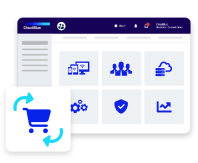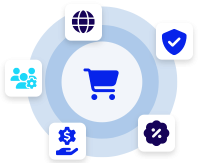Smoke testing, also known as build verification testing or confidence testing, is an initial software testing phase focused on verifying that the core functionalities of a new software build are working as expected.
Before diving into more detailed testing, QA teams perform smoke testing to ensure that the application can run without major issues. This type of testing is like a quick health check that gives developers and testers confidence to proceed with more thorough testing if the build passes. By identifying fundamental problems early, teams can avoid wasting time testing a build that isn’t functioning at a basic level.
Smoke testing typically runs right after a new software build is created. It checks essential aspects like whether the application opens, whether core features respond correctly, and if users can navigate between main screens or perform simple actions without issues. If the application fails any of these basic test cases, it’s sent back for debugging before any further testing is done, saving both time and resources.
Types of Smoke Testing
There are three main types of smoke testing: manual, automated, and hybrid.
- Manual smoke testing involves a QA tester running test cases without the help of automated tools, which can be useful for small applications or when automation is not readily available.
- Automated smoke testing, on the other hand, utilizes automation tools to execute test cases quickly, making it ideal for larger, more complex applications where speed and consistency are priorities.
- Hybrid smoke testing combines both approaches, allowing teams to automate certain parts of the test cycle while manually testing others, depending on the specific requirements of the application.
In a typical smoke testing cycle, test cases are prepared based on critical functionality, run in sequence, and evaluated. This cycle allows testers to gain confidence that the application can handle deeper testing phases like functional testing and unit integration without encountering show-stopping issues.
Advantages of Smoke Testing
The biggest advantage of smoke testing is its efficiency in spotting significant issues early in the testing lifecycle.
By catching these problems before the application moves to more extensive testing, smoke testing helps teams focus only on builds that are stable enough to be tested thoroughly. This focus on efficiency allows for better use of resources, time, and budget, especially in software development cycles that rely on continuous integration and quick releases.
Smoke testing also complements automation, as automated smoke tests can quickly verify new builds, ensuring that developers don’t waste time addressing core issues during later phases. Additionally, it’s a key step in achieving effective quality assurance and boosting overall application reliability.
Smoke testing vs sanity testing often arises as a comparison; while both are preliminary tests, smoke testing evaluates core functions, whereas sanity testing focuses on verifying specific bug fixes and new features.













